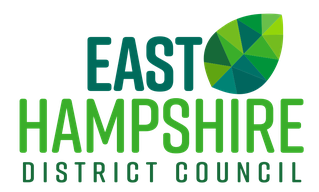Affordable housing requirement in East Hampshire
This note clarifies current policy on affordable housing provision in East Hampshire (outside of the South Downs National Park).
This note is for use by the council and developers considering residential development proposals. It sets out the thresholds for which the council will seek affordable housing provision, and the calculations used if a commuted sum (financial contribution) is required.
This note does not apply for developments proposed within the South Downs National Park, which is a separate planning authority.
Guidance on the loss of industrial or business uses
The council has produced a guidance document to support Policy CP4 (Existing Premises) of the East Hampshire District Joint Core Strategy (Adopted June 2014) and Policy IB4 (Existing Premises) of the Saved Second Review Local Plan.
The 'guidance on the loss of industrial or business uses' provides clarification on the marketing and economic viability evidence required from applicants proposing schemes in East Hampshire District (that is located outside of the South Downs National Park) that would result in the loss of existing premises in B class employment use, or the loss of land or sites allocated for B-class employment uses in the development plan.
It also includes updates introduced from 1 September 2020, revoking B1 use class, which is now treated under a new Use Class E.
- Guidance on the loss of industrial or business uses (pdf 213 kb)
Nutrient neutrality
Available nutrient mitigation schemes
For specific advice on this topic, please see what developers need to know about nutrient neutrality.
However, if you seek off-site mitigation options, the Partnership for South Hampshire (PfSH) now holds a list of all known nutrient mitigation schemes, these mitigation options are potentially available to developers and have been assessed as suitable by Natural England. It is intended that this list will be developed as more mitigation sites are made available.
It is the applicant/developer's responsibility to find suitable and sufficient nutrient mitigation solutions, and the above list schemes could help with regards to off-site mitigation options. Developers should seek their own legal advice and the advice of Natural England regarding the suitability of particular mitigation schemes for individual developments.
Biodiversity and planning guidance
East Hampshire District Council has produced a document which provides clear guidance on how to protect and enhance biodiversity within the context of the East Hampshire Planning Authority Area (i.e. the areas of East Hampshire District that lie outside the South Downs National Park).
As a working document this guidance will be updated to reflect changes in policy and legislation when required.
This document aims to assist those involved within planning policy and development in East Hampshire: planners, developers, architects, consultants, local government members, councillors, and residents.
The central principle of the document is that positive outcomes for biodiversity are readily achievable when development is carefully planned, and biodiversity is considered from the outset. This is therefore an important tool to be used when considering any development proposals and/or environmental policies.
- Biodiversity Guidance for East Hampshire District (pdf 5.4 mb)
Biodiversity net gain (BNG)
Biodiversity net gain (BNG) is an approach to development which leaves biodiversity in a better state than before.
The Environment Act 2021 includes provisions that make the achievement of a minimum of 10% biodiversity gain mandatory for developments under the Town and Country Planning Act 1990.
Landscape checklist for new development
The landscape checklist for new development was jointly prepared by planning authorities in Hampshire in 2007 and should still be used today. It is recommended that developers and their agents familiarise themselves with the guidance which clearly sets out the steps to be taken to ensure all appropriate information relating to landscape is submitted and clearly presented as part of the planning process.
- Landscape checklist for new development (pdf 3 mb)
Shopfront and design guide for East Hampshire
The council is strongly committed to maintaining and improving the shopping centres in East Hampshire District. Shopfronts have a key role to play in creating an attractive area in which to shop, as well as serving as the main advertisement for the businesses within. A well designed shopfront is a valuable asset and a good advertisement.
The design guide will be used as supplementary planning guidance by the District Council when discussing with businesses their plans for shopfronts or improvements to existing ones.
- Shopfronts and signs design guide (pdf 1.2 mb)
